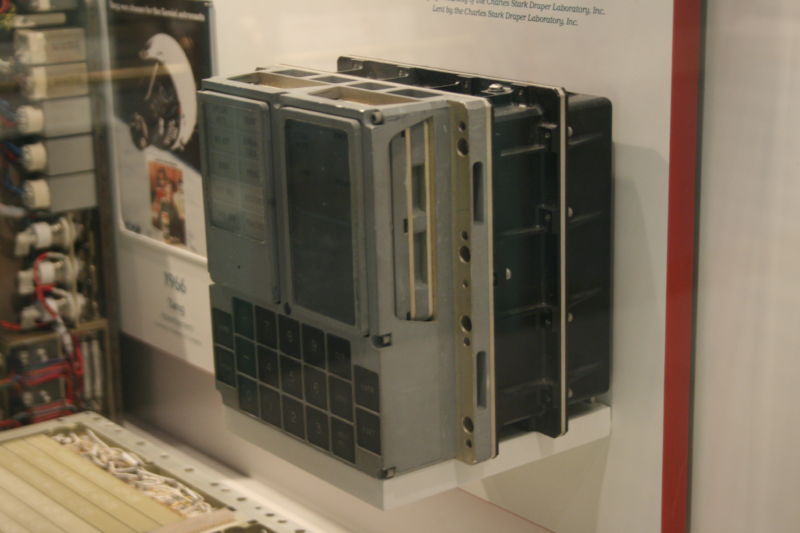Computer from NASA’s Apollo program reprogrammed to mine bitcoin

Enlarge / DSKY unit of the Apollo Guidance Computer in the National Air and Space Museum. Shirriff used a different unit that belongs to a private collector. (credit: Tamorlan)
Among the many technological breakthroughs of NASA's Apollo project to land a man on the Moon was the Apollo Guidance Computer that flew onboard Apollo spacecraft. In an era when most computers were refrigerator-sized-if not room-sized-the AGC weighed only about 70 pounds. It was one of the first computers to use integrated circuits.
A team of computer historians got its hands on one of the original AGCs and got it working. A member of the team, Ken Shirriff, then decided to see if the computer could be used for bitcoin mining.
Mining is a key part of the process for maintaining bitcoin's shared transaction ledger, or blockchain. To win the right to add a block to the blockchain, you have to solve a difficult problem: finding a block whose SHA-256 hash starts with a minimum number of zeros. The only known way to accomplish this is by brute force: miners create a block with a random nonce and compute its hash value. If the hash value doesn't have enough leading zeros, the miner changes the nonce and tries again.
Read 8 remaining paragraphs | Comments